Jira has already made a name for itself in the software development world as a reliable platform that helps product teams track bugs and release products. While the software has become an instant choice for many teams, it’s not the only option out there for product development teams, and other software like Aha! can offer an attractive alternative.
Aha! is a product development platform heavily focused on roadmap planning and product strategy creation. While on the surface it may seem like it offers similar features to Jira, both cater to slightly different needs.
This piece will compare Aha! vs. Jira by looking at core considerations like features, pricing, customer reviews, and more to see if one comes out stronger than the other. We’ll also look at why opting for a more flexible product development platform, like monday dev, might be more suitable for a wider variety of teams. Let’s jump in.
Try monday devAha! vs. Jira: At a glance
Short on time? Here’s what you need to know about Aha! And Jira in a nutshell. For more details, keep reading.
| Aha! | Jira | |
| Features | Aha! Roadmaps Aha! Ideas Aha! Whiteboards Aha! Knowledge | Timelines Scrum boards Advanced reporting Simple automation |
| Integrations | 30+ integrations available | 3,000+ integrations on the Atlassian Marketplace |
| Pricing | Prices broken down by product, starting from $59/user/month for Aha! Roadmaps | Free plan, paid plans starting from $8.15/user/month |
| Ease of use | Intuitive interface, good UX, easy-to-use basic features | Easy to use, agile, simple onboarding |
| Support | Great customer support, 24/7 issues reporting with 2-hour response time | Community support, support during local business hours, priority supply for Enterprise users |
| Customer reviews | 4.4/5 out of 240 reviews | 4.3/5 out of 5,800 reviews |
For more, see our reviews on aha! competitors, monday vs jira and jira alternatives.
Aha! vs. Jira: Features
When comparing tools like Aha! and Jira, it’s important to understand the key features that each offers. Both software options offer distinct features that cater to slightly different needs, making them suitable for different types of teams. Let’s take a look at the core features of each one to see how they stack up.
Aha! features
As a software build for product development, Aha! has a selection of different features that cater to development and product teams. Aha! makes it easy to collaborate with team members on a visual platform that keeps all aspects of product development unified. Here’s a look at some of its best features:
- Aha! Roadmaps: With Aha!’s visual roadmaps, your team can prioritize tasks and align on strategic goals
- Aha! Ideas: The Ideas feature is a collaborative way to crowdsource feedback and customer insights in one place to track and prioritize new ideas
- Aha! Whiteboards: Aha! allows users to create visual user flows, mockups, and user experiences in a digital whiteboard either from scratch or using templates
- Aha! Knowledge: Keep all your product documents in an AI-powered hub to better centralize product information
Jira features
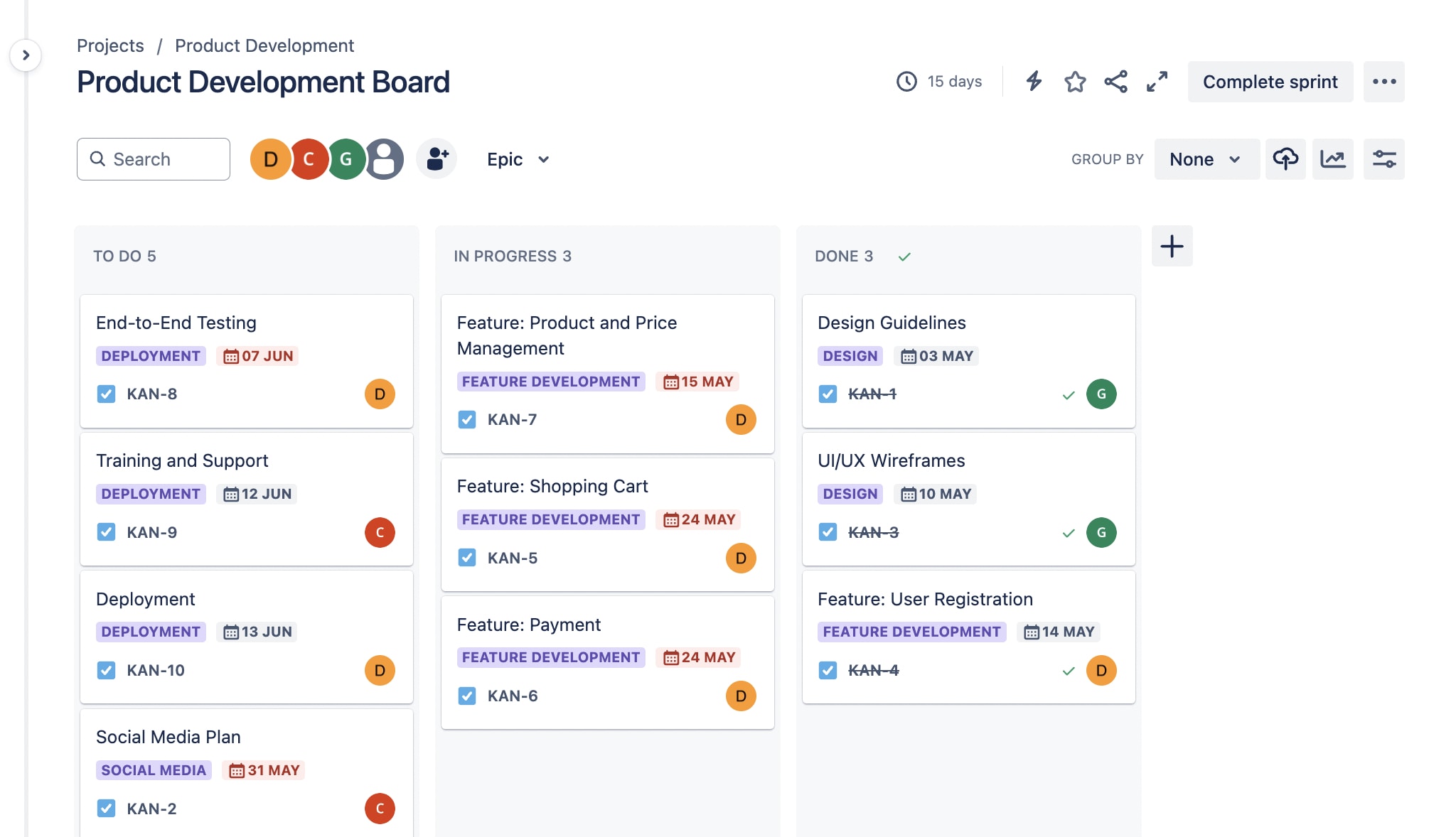
Jira, another software geared towards product development teams, is renowned for its bug-tracking capabilities. Featuring plenty of functionality for product development teams, Jira has become a go-to option for many teams looking for issue-tracking software. Here are a few of its most popular features:
- Timelines: Create interactive timelines to map work items, add epics, dependencies, releases, and keep team members in sync with goals
- Scrum boards: Agile teams can easily break complex projects down into sprints with Jira’s customizable Scrum boards
- Advanced reporting: Get access to advanced reports and gather insights on your work to consistently make improvements to future sprints
- Simple automation: Automations are made easy with drag-and-drop functionality so you can build custom workflow automations in minutes
Aha! vs. Jira: Integrations
Integrations are a core part of product development software as teams often rely on an array of tools to develop, test, and launch new products. When considering a product development platform, look for one that offers easy integrations with the core work tools you already use. Here’s a look at how Aha! and Jira integrations stack up.
Aha! integrations
Aha! offers integrations with more than 30 popular work tools, such as Slack, Azure, Salesforce, Zendesk, and more. There’s also an integration for Jira, meaning it’s possible to use both platforms simultaneously if you need them for different uses. Aha! also offers an API so you can import data into the platform from internally built tools, as well as an integration with Zapier for even more access to third-party applications.
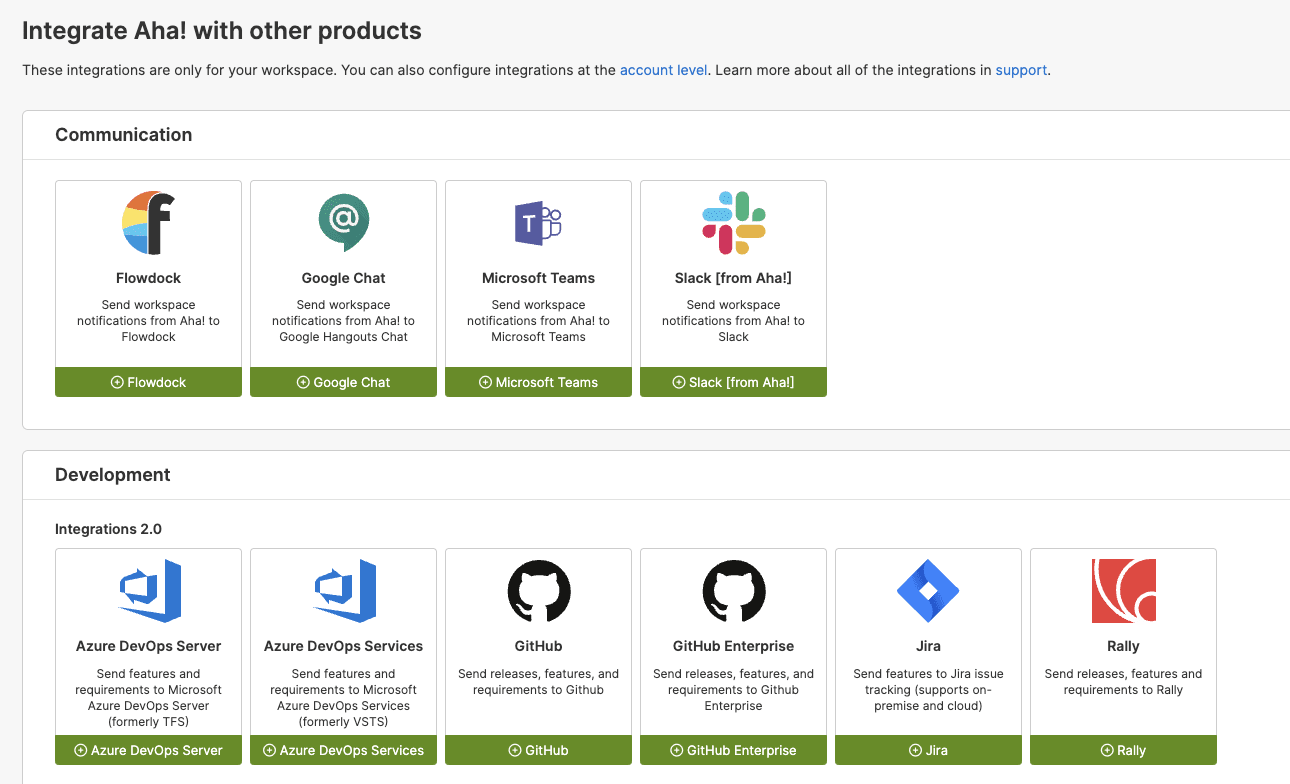
Jira integrations
As a veteran platform of product development, Jira offers plenty of integration options for the most popular work tools and then some. With integrations for over 3,000 apps, there are tools in the Atlassian Marketplace for all uses, such as development, CRMs, project management, customer service, and more. There are integrations with popular tools like Slack, GitHub, Zephyr, Jenkins, and more. There’s also an integration with Aha! so that you can use both tools.
Aha! vs. Jira: Pricing
Cost is an important factor when debating between two popular tools. While your decision may ultimately come down to cost, it’s also important to look at the value each tool offers in terms of what features and limitations you get with different plans. To make your decision easier, here’s a quick look at Jira and Aha!’s plans and pricing.
Aha! pricing
Aha!’s pricing is broken down by products, meaning you pay tiered pricing for the features you’re using:
- Aha! Roadmaps: Prices start from $59/user/month for the Premium plan, $99/user/month for the Enterprise plan, and $149/user/month for the Enterprise+ plan. Higher-tiered plans include more features, integrations, customizations, security tools, and more
- Aha! Ideas: Prices start from $39/user/month for the Essentials plan and $59/user/month for the Advanced plan. With the higher plan, you get access to more integrations, feedback features, advanced reporting, and more
- Aha! Whiteboards: Prices start from $9/user/month for the Essentials plan and $18/user/month for the Advanced plan. The Advanced plan gives you access to more customizations, templates, and features
- Aha! Knowledge: Prices start from $39/user/month for the Essentials plan and $59/user/month for the Advanced plan. The Advanced plan gives you access to unlimited product knowledge bases, more customizations and controls, permissions settings, and more
- Aha! Develop: Prices start from $9/user/month for the Essentials plan and $18/user/month for the Advanced plan. The Advanced plan includes more integrations, charts, automation features, and more
Jira pricing
Jira offers users four different plans to choose from:
- Free: There’s a free plan that’s ideal for small teams of up to 10 users, which includes 2 GB of storage, unlimited project and issues, backlogs, reports, backlogs, and other features
- Standard: For $8.15/user/month, you get everything from the Free plan with unlimited users, 1,700 monthly automations, 250 GB of storage, the ability to set user roles and permissions, and more
- Premium: For $16/user/month, you have access to everything from the previous plans along with 1,000 automations per user, AI-powered tools, unlimited storage, and additional features
- Enterprise: Finally, Enterprise plan pricing is available upon request by contacting the sales team and includes advanced security and support, centralized billing, unlimited automations, and more
- Read more about Jira’s plans and prices here
Aha! vs. Jira: Ease of use
Neither Aha! or Jira are particularly difficult to use. Both platforms offer intuitive interfaces that, with some practice, are relatively easy to navigate. However, like many platforms, it’s all in the details, meaning it’s the small touches that make certain platforms more comfortable to use over others.
Aha! ease of use
To better illustrate what real users think about Aha’s usability, let’s take a look at a few reviews from Aha!’s review page on TrustRadius:
- “The UI is incredibly simple and intuitive – I picked it up with no particular training.”
- “Very easy to use basic features, very easy learning curve […] if you need more advanced options it becomes a bit more tedious and complicated and you may require help.”
- “Difficult to manage initiative visualization for larger organizations that create many of them.”
Overall, users have positive reviews when it comes to usability, UX, and managing straightforward tasks. Where it becomes more complicated is in its advanced features and complexity with integrations, customizations, and bug tracking capabilities – which many users agree Jira outperforms Aha! in this arena.
Jira ease of use
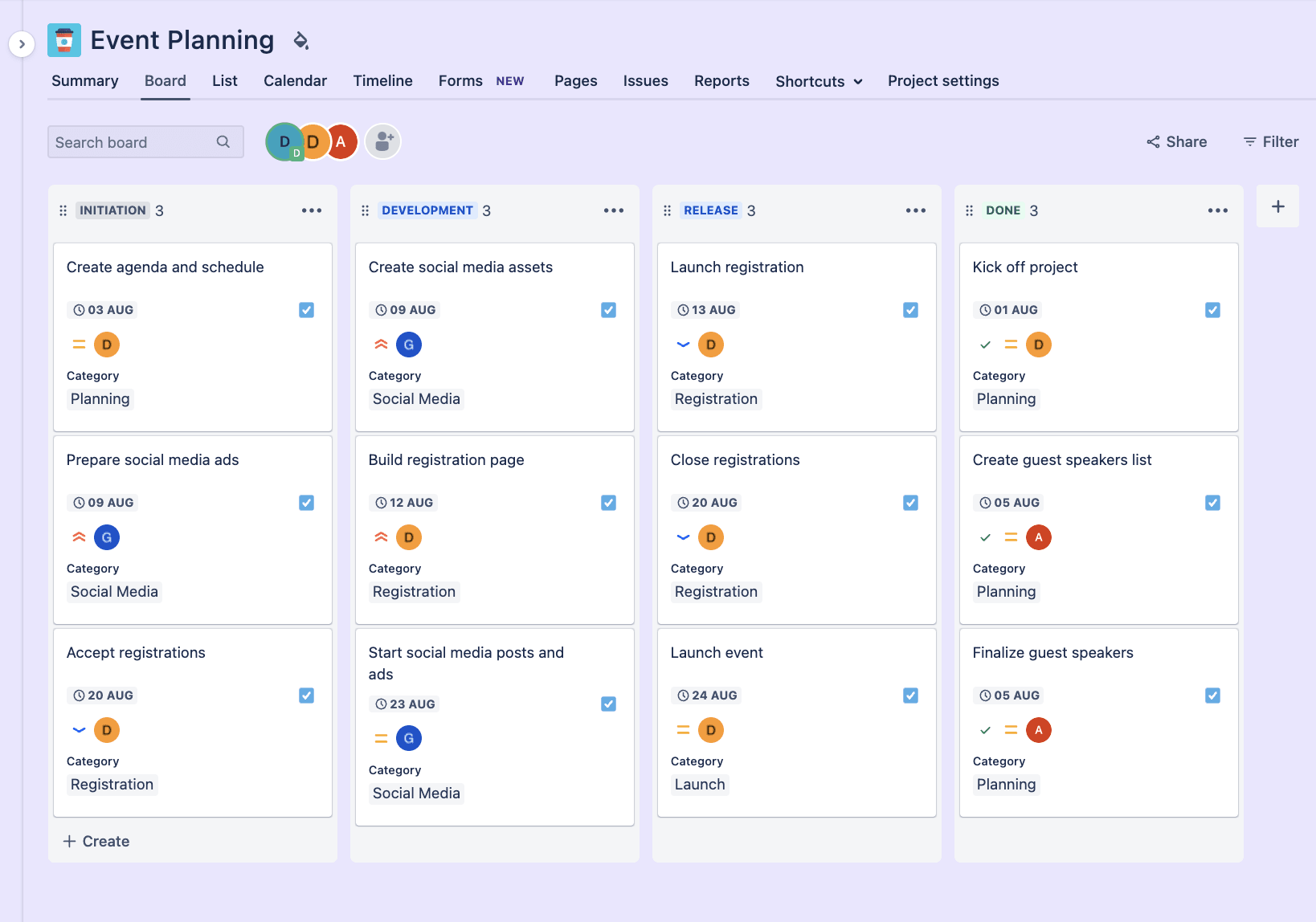
Boasting thousands of reviews on its TrustRadius page, Jira has mostly positive reviews when it comes to usability. Here’s a look at what users had to say:
- “Easily customizable dashboards are a huge help when it comes to analyzing the vast amount of data available in Jira Software.”
- “There is a learning curve to working in Jira, it is not immediately intuitive to a new user.”
- “User interface is very good to use when comparing with other tools.”
While a few users mention Jira’s learning curve, the overall consensus is that it’s a robust and easy platform to use once you get the hang of it. It also shines for bug tracking, story creation, sprint management, and is particularly suited for Agile teams.
Aha! vs Jira: Support
Customer support is another important consideration when shopping for new software. You want to ensure your team has access to onboarding resources and that agents are available to respond to inquiries or issues in a timely manner. Here’s what you can expect from both Aha! and Jira customer support:
Aha! support
Aha! offers many support resources, including guides, videos, a knowledge base, a product dictionary, and more. In terms of direct support, users can also submit a request to Aha!’s Product Success Team 24/7 and they claim they’ll respond in under two hours.
Jira support
Depending on the plan you opt for with Jira, you’ll get access to different levels of support. For example, with the Free plan, you’ll be able to get support from other users in the community forum, while the Standard plan offers support during local business hours. Premium and Enterprise users have access to 24/7 customer support.
Aha! vs. Jira: User reviews
A good way to gauge whether or not a product is the right fit for your team is to look at what other users are saying about it. Even if a product has tons of positive reviews, by reading over a sample of them you might realize it doesn’t fit your needs. Here’s a look at what real users have to say about both Aha! and Jira.
Aha! user reviews
G2 score: 4.4/5 out of 240 reviews
Overall, Aha! users on the software’s G2 review page like the platform’s customization options, ease of use, simple integrations, and collaboration tools. One user claims that using Aha! is a “great way to manage and prioritize all things software-related in one place.” However, overall, many reviews also mention a steep learning curve, missing features, and a mixed user experience.
A few users also have positive things to say about the platform’s support team: “Solid product roadmapping solution with an impressive support team backing it.” Still, some users find the learning curve can be steep and that “things can get too complex or unclear with all the features available.”
Jira user reviews
G2 score: 4.3/5 out of over 5,800 reviews
Jira reviews on its G2 review page show how the platform is well-liked by its many users. “Jira is a useful tool for keeping track of tasks and managing projects efficiently,” one reviewer writes. Many users also like that the platform is easy to onboard, saying that “implementing Jira was a piece of cake as any new employee/user can simply sign up and set up the account instantly.” That said, reviewers have admitted that “for the first-time user, it has overwhelming features,” and that more advanced functionalities have a steeper learning curve.
Jira vs Aha!: Which platform should you choose?
Choosing between the two platforms comes down to what you really need as a team. For example:
- If your team is focused on roadmapping and wants to work collaboratively on ideas while prioritizing feedback and product management, Aha! is likely the better option
- If you have an Agile team developing software products and want a tool to reliably track and handle bugs and issues, Jira is your best bet
Neither platform is necessarily better than the other, but there are different use cases that would make one more suitable depending on what your business needs for your product development strategy. It’s also possible to use both to complement each other and apply them to different parts of your product development journey.
However, instead of using two platforms or opting for one that offers stronger roadmapping over bug tracking or vice versa, why not go with a platform that offers you the freedom to track it all in one place? If you’re looking for more flexibility, consider opting for monday dev.
Try monday devMeet monday dev: Where flexibility meets robustness
monday dev, a product development platform, offers a great alternative to both Aha! and Jira. As a platform that fosters communication, collaboration, and task management, monday dev offers product and development teams plenty of features and customization options to visually manage the most complex projects down to the smallest tasks.
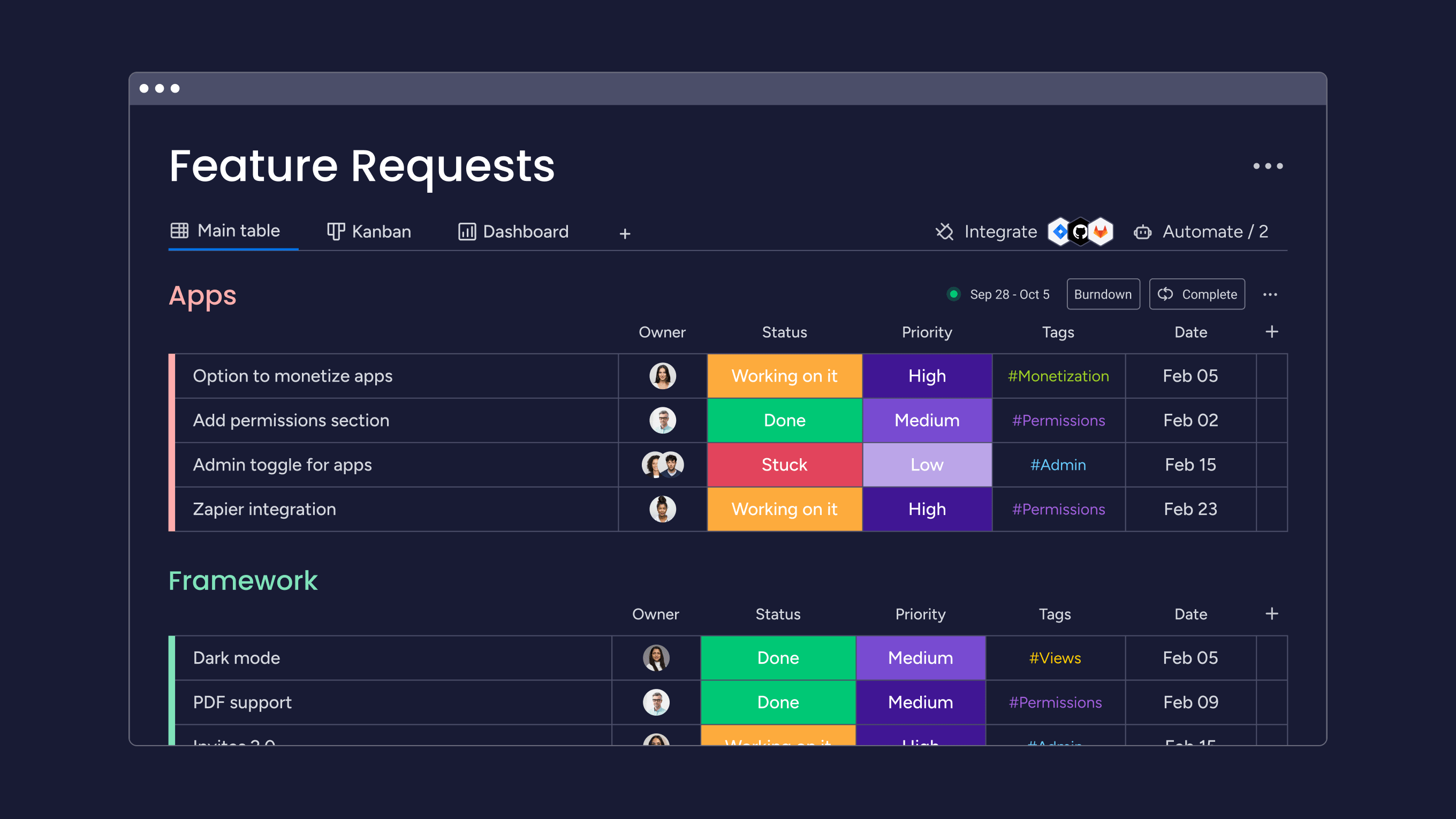
For companies that want their teams to collaborate on one platform, monday dev makes a great choice that also offers plenty of robust features for product development and project management.
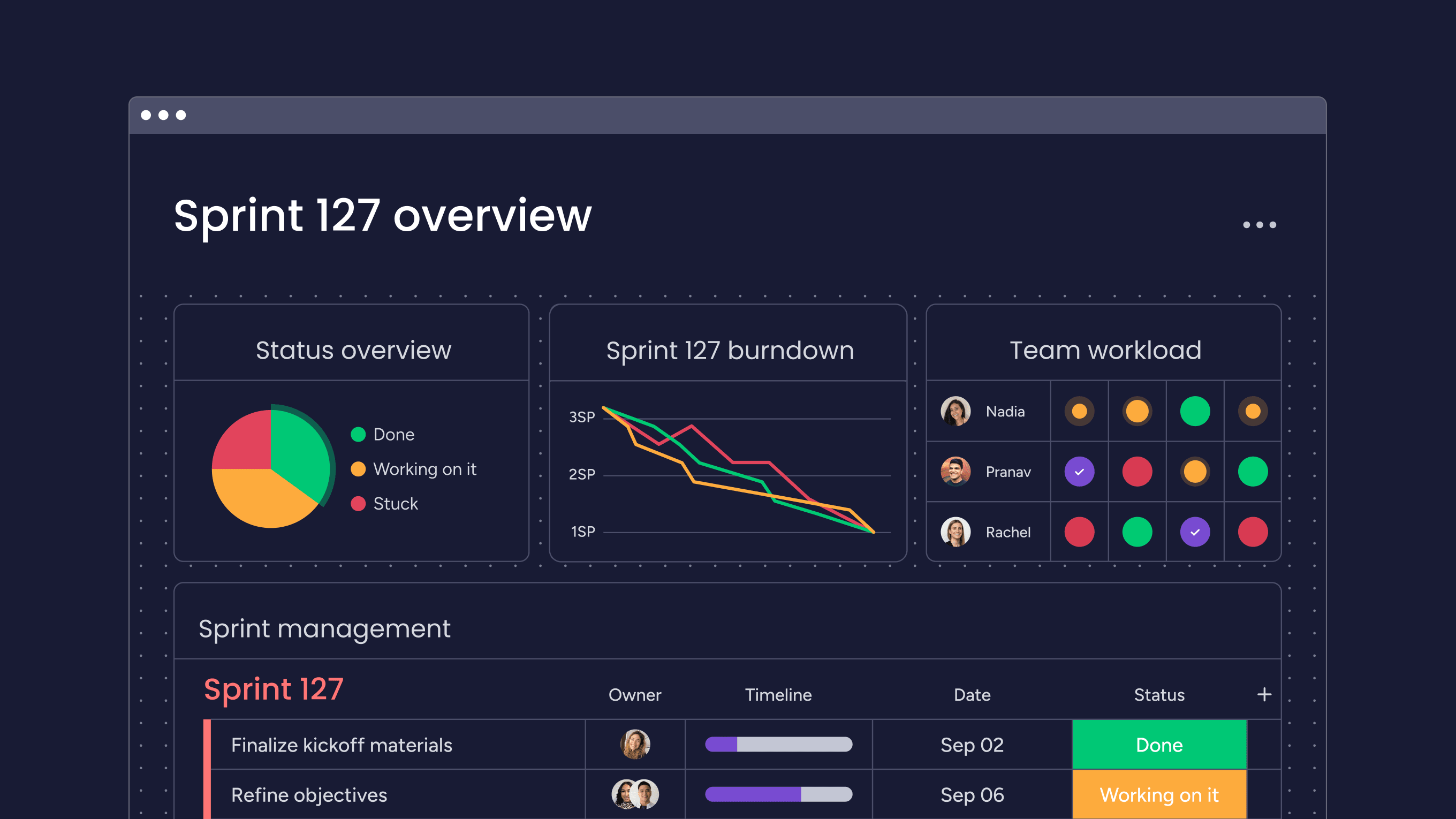
monday dev offers plenty of tools for development teams, such as customizable sprint planning boards that can keep all tasks and documents organized in one place. There’s also a board for burndown charts that help teams visually detect and prevent bottlenecks from stalling a project, as well as one for bug tracking that allows developers to collaborate on resolving known issues.

Here’s a brief look at some additional features that monday dev has to offer:
- 27+ different work views including Kanban, Gantt, Calendar, Timeline, and more
- Customizable templates for product workflows like sprint planning, retrospectives, bug tracking, roadmaps, and more
- Integrations with 200+ of the most popular work and development apps, like Slack, GitHub, Figma, Gitlab, and others
- Flexible pricing based on the number of users you need
- Create your own custom automations to handle manual repetitive tasks
- Advanced reporting and visual dashboards to gain insights, track performance, and manage goals
Users also have plenty of positive things to say about monday dev on G2. The platform boasts a 4.7/5 user review score out of 1,400 reviews, with users commenting favorably on monday dev’s intuitive design, easy onboarding, customization options, and user-friendliness.
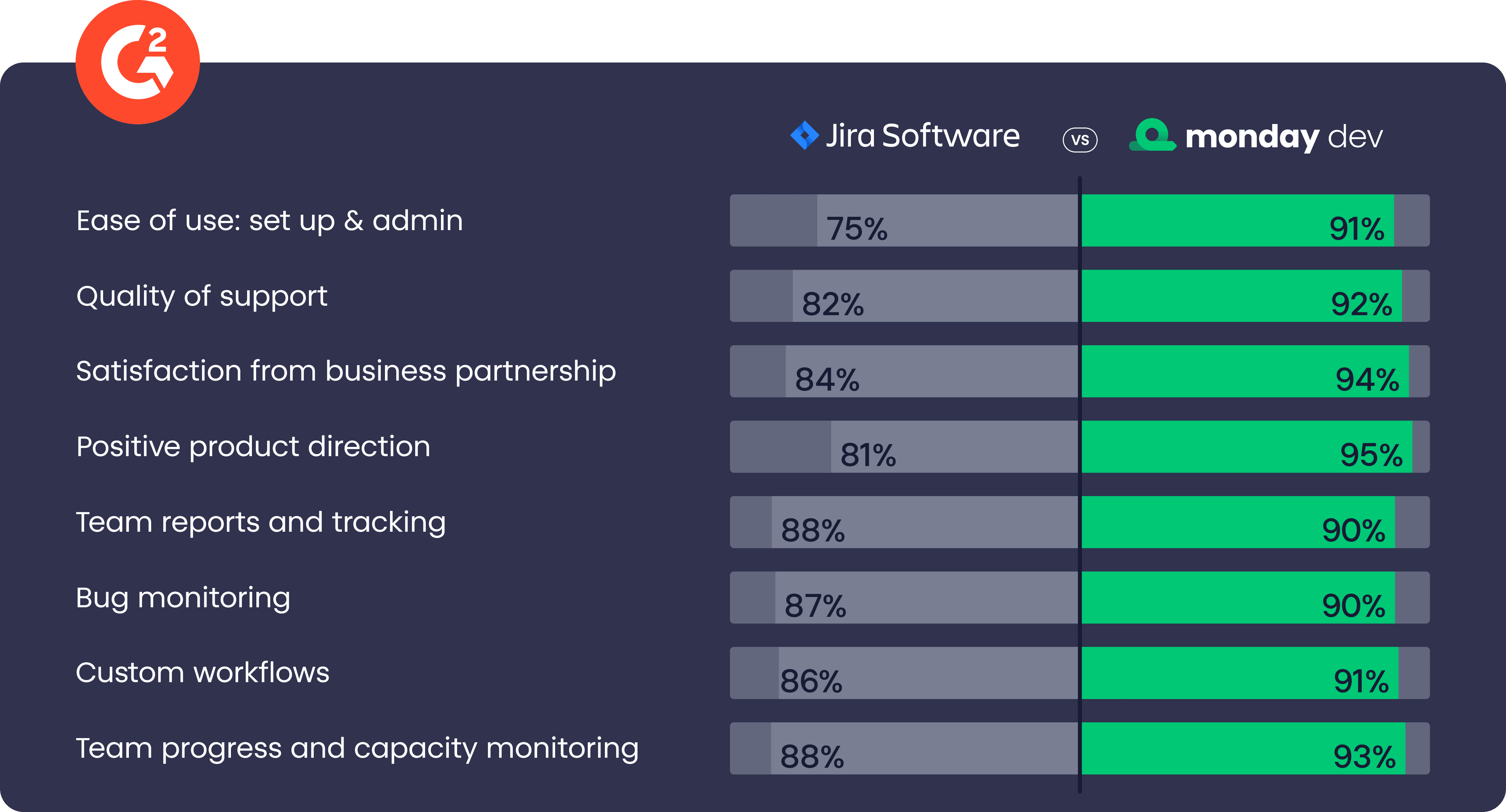
Here’s what one user has to say about it: “I love the ability to completely customize Monday boards so I can manage information the way I need to manage it. It’s easy to use right out of the box with little to no training.”
Try monday devCompared to other tools, monday dev offers plenty of functionality for development teams without sacrificing usability or simplicity. If you’re looking for a product development platform that can scale with your team and help you organize your projects, tasks, bugs, sprints, and more monday dev might be the right choice for you.
FAQs
How is Aha! different from Jira?
Aha! is more focused on roadmap planning while Jira is known for its bug-tracking capabilities and Agile workflow management.
Does Aha! have a Jira integration?
Yes, both Aha! and Jira have integrations for one another, meaning you can use both platforms and share data between the two.
What project management platform is the best for development teams?
There’s no singular platform that would fit every team’s needs. The best project management platform is the one that has functionalities that are relevant to your team’s workflows and preferences. However, there are flexible project management platforms like monday dev that can be customized to fit your team’s work style, not the other way around.
 Get started
Get started 
